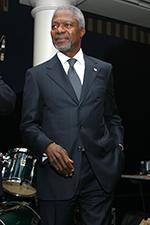Resource 1: Similarities and differences
![]() Background information / subject knowledge for teacher
Background information / subject knowledge for teacher
There are many ways in which people are the same, from physical features to personality. There are also many ways in which we are different. However, for young pupils, it is often more important for them to feel the same as others and be part of the group.
By understanding ways in which we are all the same, we make the first steps towards understanding ourselves. We also begin to see ways in which we are part of a group or a community. Helping pupils understand that they and their classmates are all equal and should treat each other fairly is an important part of a teacher’s role.
Similarities and differences in appearance
The most obvious way in which people are different is in their appearance. Some are tall, some are short. Some are fat, some are thin. If you are working with your pupils to explain similarities and differences between people, then looking at physical features is an easy place to start. For example, what are the physical similarities and differences between Michael Essien and Kofi Annan?
 |  |
You must also be careful: like adults, children can be sensitive about their appearance, so you should try not to draw attention to something that a pupil might be embarrassed about. Instead, focus on similarities such as ‘We all wear clothes’. You will need to be especially careful if you have children with physical disabilities in your class.
In addition, children sometimes tease or bully other children, and drawing attention to differences in appearance might encourage them to behave like this outside of the class. So, as well as helping pupils identify their differences in appearance, you should also emphasise how many similarities there are. If pupils can see the connections between themselves and others, they are more likely to treat others with respect.
Similarities and differences in personality
While it is easier to see the similarities and differences between people’s appearances – the way we look – it is probably more important for pupils to understand the similarities and differences between people’s personalities – the ways we think, feel and behave.
Our opinions and feelings influence the way we behave with other people. They can be summarised as follows:
- ‘Opinions’ cover what people think about things – whether they like or dislike something, or whether they agree or disagree with something. Differences in opinion can sometimes cause arguments and fights, whether with children or adults. Opinions can be based on clear factual knowledge or hearsay which is not always accurate.
- ‘Feelings’ cover people’s emotions – whether something makes them feel happy, sad, angry or frightened etc. Feelings can sometimes be hard to explain, and if someone has different feelings about something to you, it can be difficult for you to understand it.
As children grow up, it is important for them to be able to understand their feelings and emotions, interact with other people, and recognise the needs of others. It is important for children to learn that not everybody thinks and feels the same way that they do. Each person’s ideas, feelings and opinions will have been influenced by their home environment, experiences and carers. This diversity (variety) should not be seen as a problem – except where it goes against legally accepted behaviour. The activities in this module will help pupils begin to appreciate such diversity as a basis for friendship and working together.
As a teacher, you need to understand the feelings of your pupils and make sure that you consider their feelings and differences as you plan their learning. You must be considerate of the fact that some children will enjoy certain activities – e.g. talking in front of the class – and others will not.
However, you must also be fair and equal with your pupils. If you treat each of your pupils differently in class, the children will see this and begin doing the same, both inside and outside of school.
Which feelings are expressed in the photos below? How do you know?
 |  |  |
3. Respecting differences



